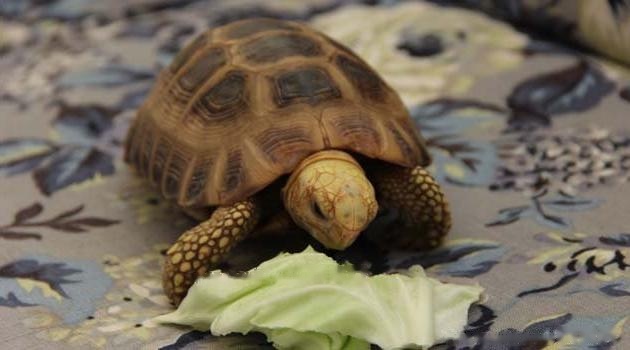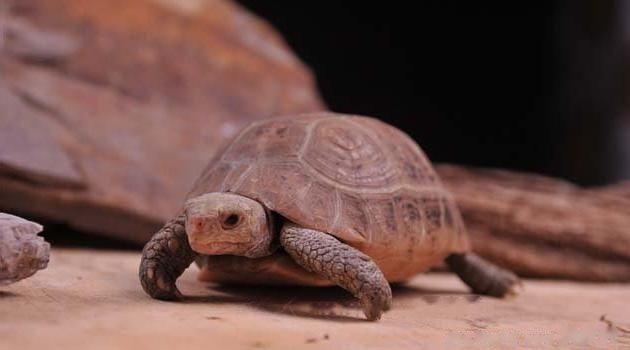Myanmar tortoises, also known as pillow ghosts, dry turtles, dragon-clawed tortoises, elephant tortoises, etc., are relatively common in the market Tortoise species. Distributed in Nepal, Malaysia, India, Bangladesh, Myanmar, China and other places, the Burmese tortoises in China are mainly distributed in Yunnan and Guangxi, while most of the Burmese tortoises seen in other provinces and cities are imported from Southeast Asia. Come, and then scattered everywhere. The places with the highest production are concentrated in Laos, southern Vietnam, Myanmar and Tai Tai. In recent years, due to the decrease in the number of Burmese tortoises, domestic Burmese tortoises are basically imported or smuggled by traders.
The head of the Burmese tortoise is light yellow, the large scales at the top are symmetrically arranged, the snout is blunt, and the upper beak is slightly curved , the nostrils are pink or pale yellow. The carapace is high and the front and rear edges are not serrated. There is a large black spot in the center of each scutellum, with obvious concentric patterns, and the head is light green-yellow. The front edge of the plastron is thicker and the rear notched deeper. The limbs are stout, oblate to cylindrical, with claws and no webs, suitable for walking on land. There are large scales on the surface, which are gray-brown. The length of the adult carapace is more than 20cm, and the longest can be about 40cm. The head is medium, with a pair of forehead scales and a large, often divided frontal scale on the top of the head, the remaining scales are small and irregular; the snout is short and the upper jaw has three serrations. The limbs are stout, the forelimbs are flat and round, and the hind limbs are cylindrical; the forelimbs have 5 claws; there are no webs between the fingers and toes. The tail is short, with a claw-like horny protrusion at the end, and the male is well developed.
Love warm and avoid cold. Under artificial feeding conditions, turtles like to crawl on sandy soil, with little activity during the day and more activity at night. When the ambient temperature is 22-33 ℃, the turtle's activity and food intake are large. When the temperature is 17-20 ℃, it only eats a small amount of food and has little activity. When the temperature is 12-15 ℃, the turtle eats little or no food, and there is indigestion when eating more food. From June to September every year, activities and feeding are flourishing. After a long-term drought in August, it suddenly rained. Turtle was very excited to crawl in the rain. Some bowed their heads to drink water, and some stopped on the sand. In the yellow plum season, when it rains for several days, most turtles live in artificial caves or under awnings. In late November, when the temperature drops, the tortoises move slowly, and some have not seen crawling for several days. When the temperature is lower than 14°C, the tortoise enters a state of hibernation. At the end of March of the following year, when the temperature reaches nearly 20 degrees Celsius, the turtles from the domestic production area are stung, and they can eat normally at 19 degrees Celsius, and their digestion is normal.
Myanmar tortoises have strong adaptability and like to eat fruits, vegetables and other plants. Bananas, tomatoes, citrus, etc. are more tempting to them. In the wild, Burmese tortoises also eat flowers, grass, wild fruits and fungi, insects, arthropods and mollusks. Under artificial feeding, the staple foods include lettuce, cabbage leaves, Shanghai green, sweet potato leaves, dandelion, mulberry leaves and hemp leaves; tomatoes, bananas, apples, rice, fresh corn, plantain, cucumber, beans , cantaloupe, watermelon rind, etc. can be fed in small amounts, but not as a staple food; feeding foods with too high oxalic acid content is not good for the metabolism of turtles. Animal foods such as lean meat and snails can be fed regularly.

Because the turtle is used as a resource animal by the people in the origin, it is captured and sold without restrictions, especially in some countries Exports, resulting in a sharp decline in the number of living. The Burmese tortoise is the most common tortoise being shipped from Vietnam to food markets in China; in 199, about 100,000 Burmese tortoises were shipped from the Ho Chi Minh market. Like many other tortoises, the Burmese tortoise is part of the pet trade. Between 1989 and 1997 alone, nearly 700 Burmese tortoises were sold to the United States. Along with the expansion of human commercial and residential areas, it also faces habitat destruction. In the domestic production area, the Burmese tortoise is not easy to see, and it is no longer enough to supply the market around 2005.
Burmese tortoises generally start mating in May, July-August is Mating season. When the male turtle is in heat, it follows the female turtle. When the female turtle stops, the male turtle climbs to the front of the female turtle, stretches its head and neck, and keeps moving up and down, and occasionally touches the head of the female turtle with its mouth to prevent the female turtle from crawling. . Shell collisions can occur between males competing for mates and between males and females. When the female turtle stops crawling, the male turtle detours behind the female turtle in time, climbs on the carapace, hangs the front limbs, and touches the ground with the hind limbs, lifts the tail of the female turtle with the tail, slightly lifts the hind limbs of the female turtle, and proceeds, mating takes 6-6 10 minutes. Under artificial feeding conditions, the Burmese tortoise lays eggs in June, July, September and November. Eggs are white, oblong, and the shell is thicker than other turtle shells. Each egg lays about 5-10 eggs, a few can reach a dozen or so, and 1-3 batches of eggs are laid per year. Eggs have a long diameter of 43-48 mm and a short diameter of 34-37 mm. Eggs weigh 28-38 grams.
![[Dog Training 5] The training method of pet dog dining etiquette](/static/img/12192/12192_1.jpg)





